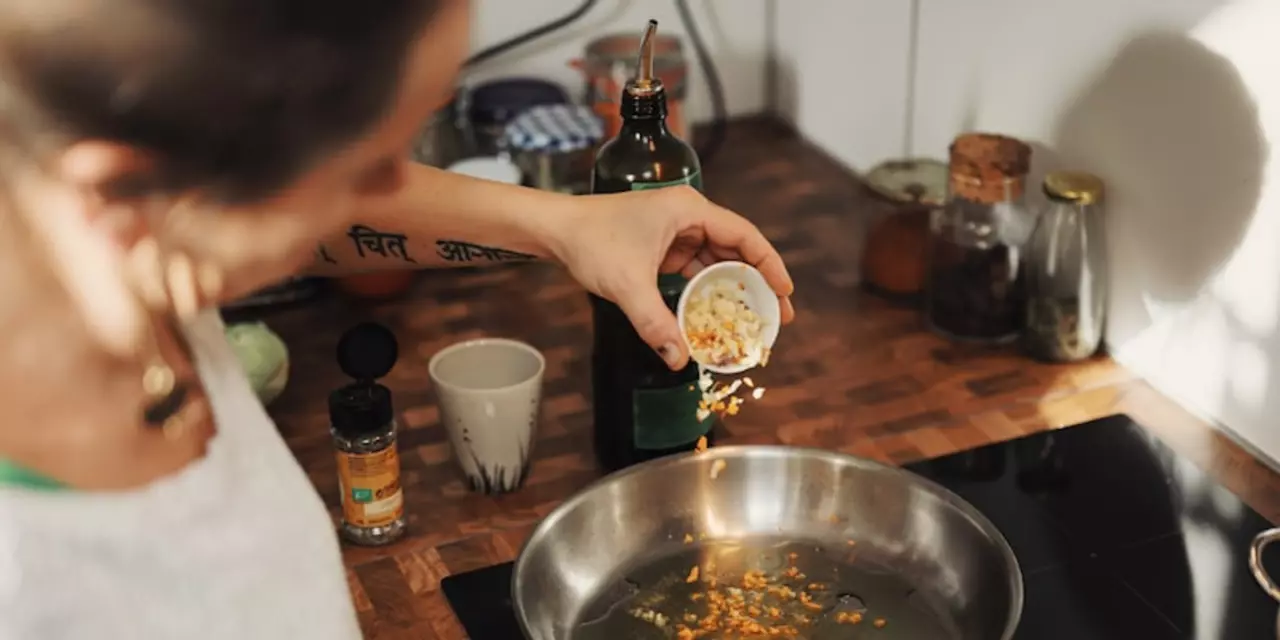Exploring the Spice Cabinet: A Guide to Indian Cuisine and the Essential Spices
Indian cuisine is renowned for its intense flavors and fragrant aromas. This is largely due to the use of a wide array of spices, with each combination of ingredients imparting a unique flavor to the dish. It is impossible to imagine Indian food without spices. They are an integral part of the cuisine and are essential for the distinctive flavor of Indian food.
Indian spices have been used for centuries to impart flavor, color, and aroma to food. There are numerous types of spices used in Indian cooking, and each has its own unique flavor and properties. Some of the most popular spices used in Indian cooking include turmeric, cumin, coriander, mustard, ginger, and chili. These spices are often used in combination with other ingredients to create a unique flavor profile.
When it comes to Indian cuisine, spices are the key ingredient to a successful dish. Each spice has its own unique flavor and aroma and can be used to enhance the flavor of a dish. For example, turmeric is used to add a golden yellow hue to curries and other dishes, while cumin adds a smoky flavor to dishes. Mustard is a common ingredient used in many Indian dishes, as it gives a pungent flavor to the dish.
Spices are also used in Indian cuisine to help preserve food. Some spices, such as turmeric and chili, have antimicrobial properties which help to preserve food for longer periods of time. This is especially useful when cooking large batches of food, as it allows the food to last for longer and still retain its flavor and freshness.
In summary, it is impossible to imagine Indian cuisine without spices. They are essential for the intense flavors and fragrant aromas that have made Indian food famous around the world. Spices are also used to enhance the flavor of dishes, as well as to preserve food for longer periods of time. Whether you are a beginner or an experienced cook, having a well-stocked spice cabinet is essential for creating delicious and authentic Indian dishes.
The Art of Balancing Spices: How to Create Authentic Indian Dishes
Indian food is incomplete without spices. It's the spices that bring the complex flavors, aromas, and colors to life. But how do you balance the spices in Indian cooking? After all, too much of a good thing can be overwhelming. With the right techniques, you can effortlessly create authentic Indian dishes that will tantalize your taste buds and leave your guests asking for more.
Start With Quality Ingredients
The key to mastering the art of balancing spices is to start with quality ingredients. Invest in high-quality spices and whole spices over pre-ground varieties. Whole spices have a longer shelf life and retain their flavor better. You can also customize the flavor profile of your dishes by toasting and grinding your own spices.
If you have access to an Indian grocery store, take advantage of the wide selection of spices and herbs that are available. Otherwise, look for a trusted online spice store to buy quality ingredients.
Play With Different Combinations
When experimenting with spices, don't be afraid to play with different combinations. Many Indian dishes require a combination of spices like cumin, coriander, cardamom, cinnamon, and turmeric. Get creative and add some of your favorite spices to the mix. This is an art, not a science, and you'll find that you develop your own signature spice blends over time.
Remember to start small and add more spices as you go. Use a teaspoon of each and adjust the amounts to suit your individual taste. You can also use a pre-made spice blend as a starting point and add your own twist to it.
Taste and Adjust
The most important rule in balancing spices is to taste and adjust as you go. Don't be afraid to sample the dish and tweak it until you get the flavor you want. Sometimes, the spices that you added may need more time to infuse the dish. If so, give the dish some time to simmer and then adjust the seasoning accordingly.
You can also adjust the heat level by adding more or less of the spicy ingredients. For a milder dish, leave out the hot spices, like cayenne pepper, or reduce the amount. Conversely, if you want a spicier dish, add more of the hot spices.
Conclusion
Indian food is incomplete without spices, and mastering the art of balancing spices is essential for creating authentic dishes. Start with quality ingredients, play with different combinations, and taste and adjust as you go. With these tips, you'll be well on your way to creating flavorful and delicious Indian dishes.
Spice Up Your Life: The Health Benefits of Adding Spices to Indian Food
Indian food is incomplete without spices. There's no denying that spices add flavor, aroma and color to Indian dishes, but did you know that they can also be good for your health? Spices are used in traditional Indian recipes to boost the flavor of food and to balance the five elements in Ayurvedic cuisine. But they also contain powerful antioxidants, vitamins and minerals that can boost your health and help protect you against disease.
Turmeric, for example, is a popular Indian spice that has powerful antioxidant and anti-inflammatory properties. It also has antiseptic and antibacterial qualities, and has been used for centuries to treat various ailments and promote overall health. Other spices, such as cumin, coriander, and ginger, are also beneficial for your health, as they are rich in vitamins, minerals, and antioxidants.
In addition to the health benefits, spices can also help to reduce bad cholesterol levels and improve digestion. They can help to reduce blood pressure and improve blood circulation, and can even be used to reduce the risk of certain cancers. Spices can also help to boost your immune system and fight off infections.
When cooking Indian food, it is important to use the right spices to get the most out of their health benefits. For example, turmeric and cumin are great spices to use in curries, while ginger and garlic can be used to add flavor to soups and stews. You can also add other spices like coriander, cardamom, and cinnamon to give your dishes an extra punch of flavor and nutritional value.
If you're looking for a way to spice up your life and your health, adding spices to your Indian food is a great way to do it. Not only are they full of flavor, but they also offer a variety of health benefits that you can't afford to miss out on. So go ahead and spice up your life – try adding some Indian spices to your meals today!

